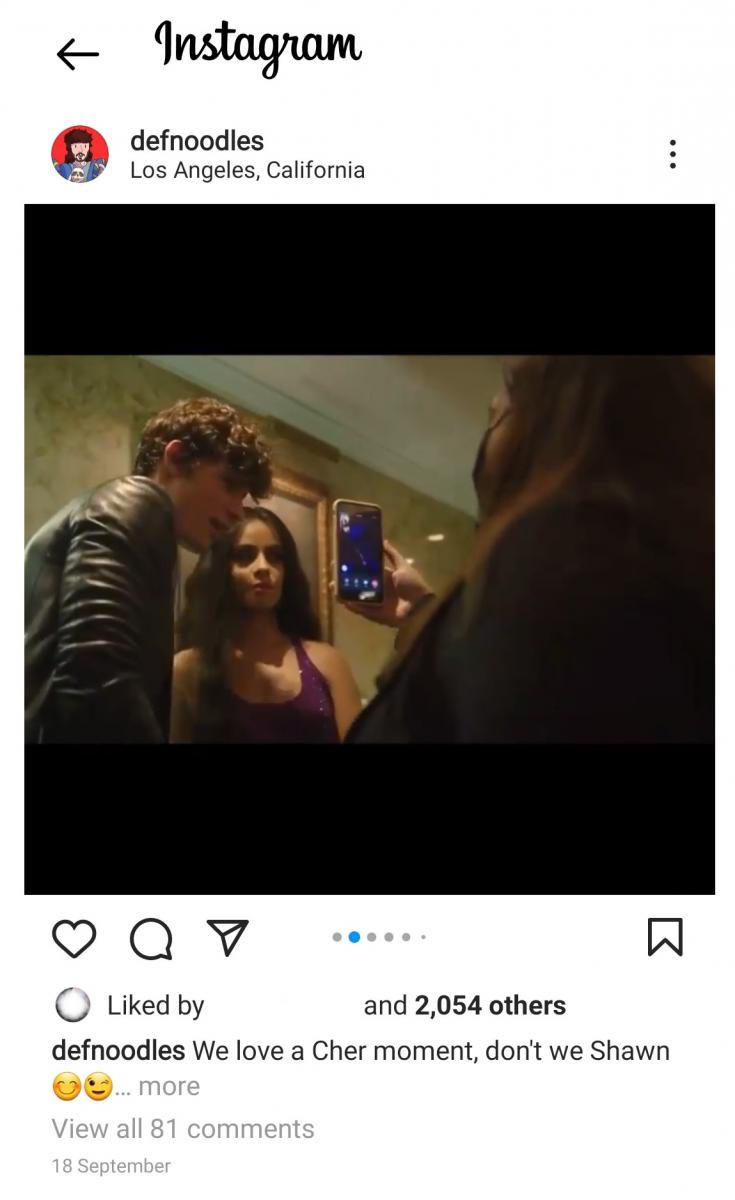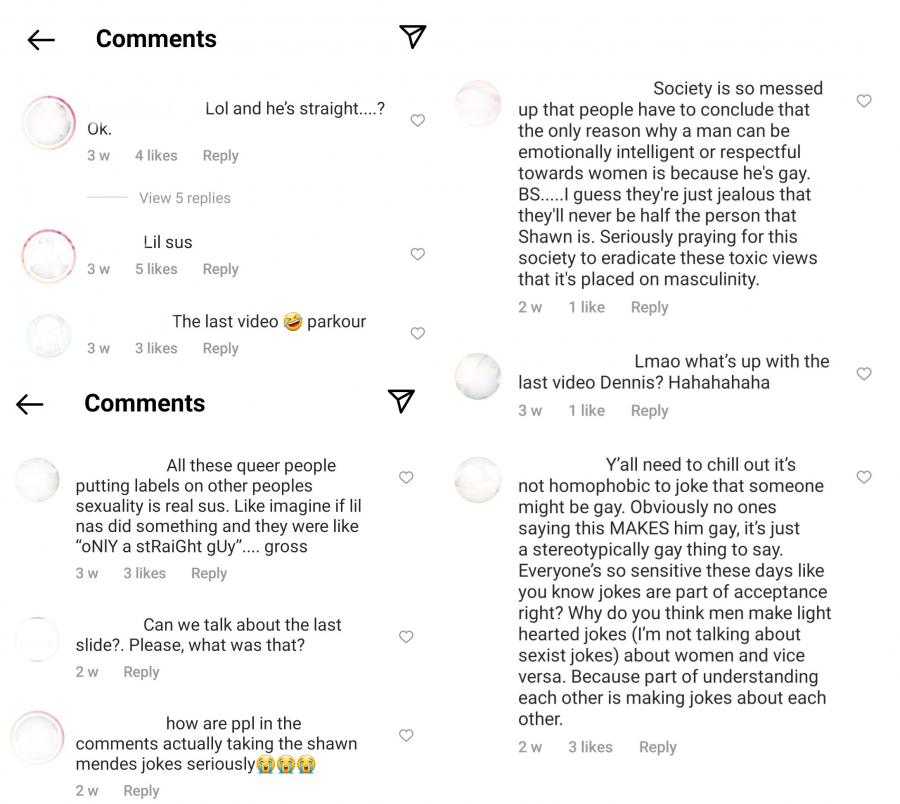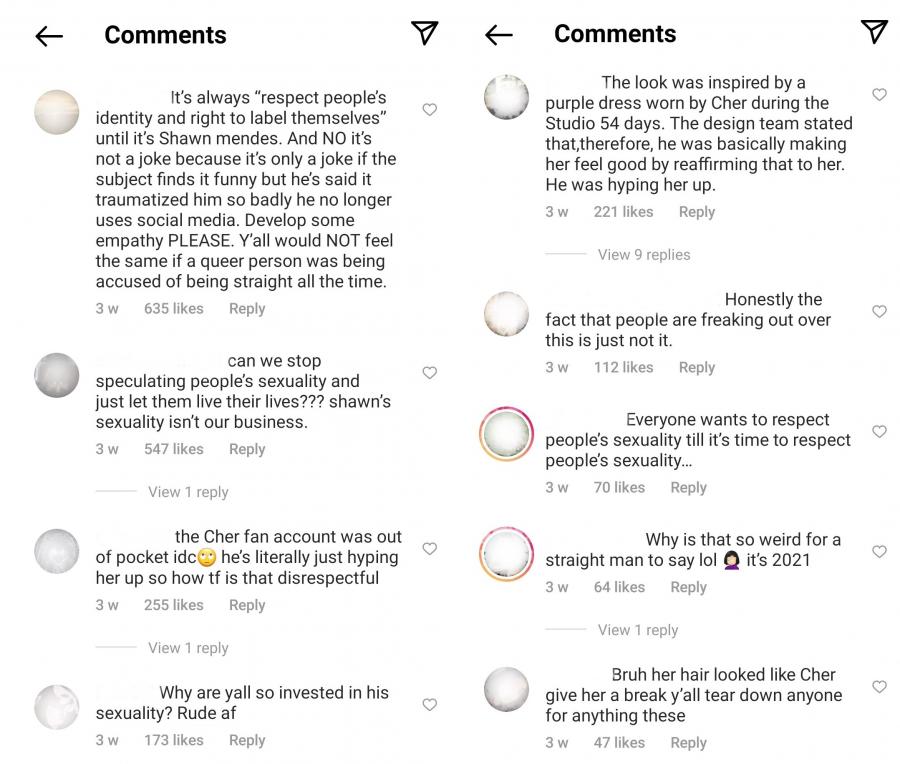
It's Giving Gay? - On the discourse about Shawn Mendes' sexuality
The day is September 13, 2021, the location is the Metropolitan Museum of Art. The world’s biggest fashion night is about to commence. As per their tradition, Vogue films some of the high-profile celebrities getting ready for the event. This year, famous singer Shawn Mendes is one of them. Mendes is trying on his outfit, while in another hotel room nearby, his girlfriend Camila Cabello – also a famous singer – is preparing for the night as well. The two have not seen each other’s finished looks, so when they finally meet, they take a minute to admire one another. What follows after is a video call in which Mendes gives a comment that will soon spark quite the debate about the singer’s sexuality: "It’s giving Cher".
In this paper, I will analyse the discourse that emerged as a result of Shawn Mendes’ language use in his Vogue Met Gala video in relation to his sexuality. I will take a look into why people think the singer is gay and whether it is okay to make such assumptions.
Where it all started: Cabello and Mendes get ready for the Met Gala
The Met Gala is an annual event hosted at the Metropolitan Museum of Art in New York. It is a fundraiser known for its extravaganza; world-famous celebrities walk the red carpet in the dramatic and creative outfits specifically created to fit the gala’s special theme, which changes every year. Vogue has a tradition of creating videos that show celebrities getting ready for the event, which often garner a lot of attention as they give fans a peek behind the scenes.
As aforementioned, the videos by Vogue included one of Camila Cabello and Shawn Mendes, showing how they get ready for the event. In the video, Cabello explains the inspiration behind her look, saying "the whole vibe is very like, ‘70s, like Studio 54. It’s giving purple. It’s giving sparkles. It’s giving long hair. It’s giving disco glam. It’s giving elevated but not over the top". Later on in the video, when Mendes and Cabello are being filmed while discussing Cabello’s look, Mendes makes the exact same kind of statement that Cabello does, saying "It’s giving Cher". However, out of the two singers’ similar statements, the one by Mendes is the only one to have caught people’s attention.
The internet recontextualises
On the 18th of September 2021, Instagram account @defnoodles (a commentary account that reports on celebrity/influencer gossip, news, drama, etc.) made a post about the discourse that had recently been emerging about the remark Mendes made in the Vogue video. The post (see Figure 1 below) consists of a couple of different slides of which the first three are the most important. The first one serves as a sort of thumbnail, indicating the subject of the post and the third one is an example of some of the statements people have been making about the video on Twitter.

Figure 1: First and third slide of the Instagram post by @defnoodles
The second slide then, as shown in Figure 2, is a recontextualisation (Blommaert, 2005) of Mendes' Vogue video. The text (clip) as shown in the post was lifted from its original context, i.e. the YouTube video posted by Vogue, (decontextualisation) and inserted into another discourse, i.e. the post by @defnoodles (entextualisation). The text is therefore intertextual (Blommaert, 2005). The original text in the Vogue video is drawn upon in the reposted clips of it online, as seen in @defnoodles' Instagram post. This means that elements from the original text were re-used in new texts, creating interdependence between these texts, and, thus, intertextuality.
This recontextualisation in turn leads to the emergence of another discourse; that of people responding to the already existing discourse as displayed in the post, which consists of people responding to the Vogue video with assumptions about Mendes' sexuality (see Figure 1). Of course, this comes as no surprise, intertextuality and metadiscourse are, after all, at the heart of social media discourse. Platforms such as Instagram are designed to get people to create/share/like/comment and so on.

Figure 2: Second slide of the Instagram post by @defnoodles
The internet responds
@Defnoodles' post shows that several people think Mendes saying "It’s giving Cher" indicates the singer is queer, as they find it strange for a straight man to say such a phrase. Though some of the comments on the Instagram post seem to agree with the statements in the post (namely that Mendes could not possibly be straight), most are completely opposed to making assumptions about the singer’s sexuality. As seen in Figure 3 below, one user posted a sarcastic comment questioning Mendes' presentation as straight, which got four likes. Another user went so far as to say that Mendes' remark is 'sus,' i.e. suspicious, which indicates they too distrust Mendes' identification as being straight. This comment garnered five likes or 'endorsements.' Lastly, one user tells everyone to 'chill out' because it is not homophobic to make jokes about stereotypically gay language, everyone is just too sensitive these days.
These users can be categorised as the group producing the discourse that makes assumptions about Mendes' sexual orientation. As happens with the rise of any group, a counterparty has assembled that responds to the emerging discourse by condemning the other group's actions. This counterparty finds it wrong to make assumptions about sexuality, even if it is meant to be a joke. For future reference, the first group will be called group 1 and the latter group 2.

Figure 3: Some comments on the Instagram post by @defnoodles
As seen in Figure 4 below, group 2 is firmly against the actions of group 1. As one user says, group 1 does not respect Mendes' identity and right to label himself. They say it is not a joke because the singer himself has stated before that people assuming his sexuality has traumatised him. They point out the irony of the fact that if the roles were reversed and a queer person was being accused of being straight all the time, we would collectively condemn this because it invalidated their sexuality. We would most likely go so far as to call that act homophobic. This particular comment has gotten 635 likes, which means many people agree with the message of this user. Other users agree with the fact that we should stop speculating about people's sexuality because it is not our business or simply because this type of language does not necessarily index a queer identity/sexuality. One user calls it "rude af" (read: rude as f*ck) to be so invested in Mendes' sexuality and another points out the fact that Camila was inspired by Cher, so it is not weird at all for Mendes to reaffirm she indeed looks like Cher.
They point out the irony of the fact that if the roles were reversed and a queer person was being accused of being straight all the time, we would collectively condemn this because it invalidated their sexuality
In these comments we see a lot of frustration and anger being expressed via the use of capital letters, the excessive use of question marks, and the use of sarcastic/frustrated emojis such as the face-palm one. Language use is also important: cursing gives extra emphasis to anger which we see in the "rude af" comment or the "BS" (read: bullsh*t) comment in Figure 3. By using slang such as "bruh", "this is just not it" or "that was out of pocket", which can be used to express disapproval, disappointment, anger, or confusion, users from group 2 indicate their frustration and indignation at the actions of group 1. Additionally, the alternation between lowercase and uppercase letters as seen in the "oNlY a stRaiGht gUy" comment in Figure 3 indicates a certain level of sarcasm and disdain for the other, thereby emphasizing how ridiculous the other sounds. These are all methods used to emphasize your own message but also to highlight the faults in the argument of the other. It is clear the two groups are in a heated debate with one another. But how did this debate even come to be? What is it about "It's giving Cher" that makes Shawn Mendes queer in the eyes of some?

Figure 4: Some comments on the Instagram post by @defnoodles
A queer linguistic repertoire
The internet has no exact answer for where the term "it’s giving" originally came from. Website knowyourmeme.com defines the term as slang "used to describe someone or something's look or vibe with a positive ironic connotation derived from the phrase ''giving X vibes''.' The term is said to be stereotypically female slang and became popularised in late 2021 (Hamilton, n.d.). The term possibly originated on an episode of Divorce Court where Rolling Ray, who is a disabled gay man, introduced himself with the phrase "it’s giving very much how you doing your honor Ms. Judge Lynn Towler". The conclusion can be drawn that the phrase is closely related to and associated with queer culture and language. Since the term is also stereotypically female slang, it makes perfect sense for Cabello to use it in the video when she explains the inspiration behind her outfit. However, for Mendes, it is a different story.
Mendes is using an inherently feminine phrase that also belongs to a queer community and therefore implicitly communicates that he is queer himself
Considering the fact that the phrase is thought to be inherently feminine and was first said by a gay man, it is thought to be a little odd for Shawn Mendes – who is a cisgender, straight man – to use it unironically. Most men that do use the phrase are queer, gay, or bisexual for example, meaning that the phrase belongs to a queer linguistic repertoire. A linguistic repertoire is defined as "the totality of linguistic resources (…) available to members of particular communities" (Gumperz, 1972). In short, the term refers to the variety of e.g. phrases and sayings that a member of a community uses which communicates to others that they are part of that community. In this case, Mendes is using an inherently feminine phrase that also belongs to a queer community and therefore implicitly communicates that he is queer himself. This illustrates the reasoning behind thinking Mendes could not be straight, which is what many people of group 1 in the comments of Figures 1 and 3 above do.
The indexical meaning behind the singer's language use is, therefore, that he is queer. Indexical meaning refers to social meaning with ‘interpretive leads between what is said and the social occasion in which it is being used’ (Blommaert, 2005). As aforementioned, the social meaning of 'it's giving' has to do with femininity and queer culture; the social occasion of Mendes saying it unironically in a Vogue video leads to the interpretation that he is part of the LGBTQ+ community by viewers of the video. In this light, it almost makes sense for people to speculate about Mendes' sexuality is LGBTQ+. ‘It’s giving’ is part of a linguistic repertoire that is associated with femininity and as it happens, an increase in femininity in a man is often seen as an indication that he is gay (Kranz et al, 2016).
Conclusion
In sum, Shawn Mendes' comment "it's giving Cher" in his Met Gala Vogue video created quite the controversy online. The slang term's roots in queer language caused the internet to speculate about Mendes' sexual orientation, as they thought the comment indexed a queer identity, even though the singer had a girlfriend and openly identified as straight at the time. The clip in which Mendes makes the comment was recontextualised online, where people responded to the recently-emerged discourse about the celebrity's sexuality by either joining in on the speculation about his sexuality (group 1) or condemning others for doing so (group 2). The speculation about Mendes' sexuality was based on harmful stereotypes about queer people that should no longer be perpetuated in our society. It can be concluded that speculation and assumptions about an individual's sexual orientation harm both the individual in question and the LGBTQ+ community. Therefore, it is best to refrain from taking part in such practices.
References
Blommaert, J. (2005). Discourse: A critical introduction (key topics in sociolinguistics). Cambridge University Press.
Gumperz, J. J., & Hymes, D. (1986). Directions in sociolinguistics: Ethnography of communications. Blackwell.
Hamilton, P. (n.d.). It’s giving. Know Your Meme. Retrieved 5 December 2021
Kranz, D., Pröbstle, K., & Evidis, A. (2017). Are all the nice guys gay? The impact of sociability and competence on the social perception of male sexual orientation. Psychology of Men & Masculinity, 18(1), 32–39.